Valuing Native Vegetation Restoration on Oil &
Gas Rights-of-Way

With more than 500,000 miles of oil & gas rights-of-way (ROWs) in Texas alone, understanding the total value of native vegetation restoration provides both natural resource and industry opportunity. To date, limited data has been available to evaluate the difference in restoring disturbed lands to native states versus the traditional use of non-native seeds. Understanding the full scope of this difference including broad ecosystem impacts as well as social benefits could create a positive business case for native vegetation restoration by industry.
This valuation project aimed to:

Quantify and monetize carbon sequestration, water quality, water quantity, and biodiversity benefits of native rangeland vegetation within the Eagle Ford Shale play.
PROJECT SUMMARY
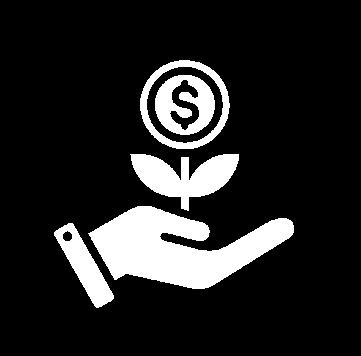
Evaluate the return on investment and social return on investment (SROI) for native vegetation restoration.

Recognize industry partners as an advocate for native vegetation restoration and a catalyst for expansion of native habitat beyond the ROWs into rural working lands.
Texan by Nature partnered with Texas A&M Natural Resources Institute (NRI), Texas A&M University Department of Rangeland, Wildlife, and Fisheries Management, and EcoMetrics, LLC, on a project funded by EOG Resources Inc. (EOG) to quantify the environmental and economic return of native rangeland restoration in the Eagle Ford Shale play. The two-year project monitored soil health, carbon sequestration, and biodiversity at four study sites (a native-restored grassland, a non-native-restored grassland, a native-restored well pad, and an unrestored well pad) within LaSalle County. These field measurements were then paired with literature values to quantify the SROI uplift provided by native over non-native restoration.
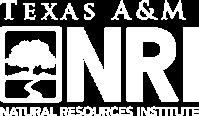


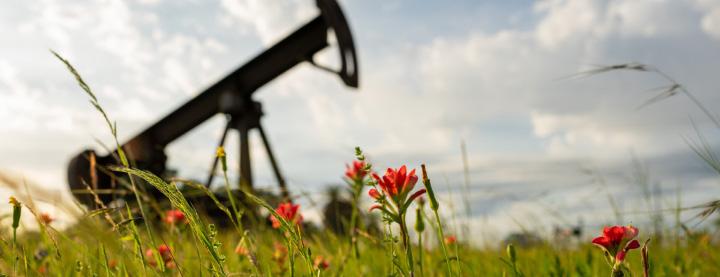
RESULTS
Native grassland outperformed non-native for the majority of measurements. The SROI analysis estimated an uplift of $266 per acre for native grassland restoration.
Note: The full analysis detailing the 21 annual outcomes is available in the full report.
Total population support, water regulation, and waste treatment outcomes experienced the largest relative increases in annual values between native and non-native grassland. Only one outcome – the total value of livestock grazed – experienced a decrease in comparative annual outcomes. However, livestock grazing capacity was not measured in this study.
Stakeholders Outcomes Non-Native ($/acre) Native ($/acre) Native Uplift ($/acre) Environment Benefits to the environment include soil health (e.g., soil stabilization, formation, nutrient cycling), water benefits (e.g., water regulation, treatment, filtration), and biodiversity support (e.g., biological control, pollinators). $157 $298 $141 General Public Benefits to the general public include cultural, aesthetic, and social values (e.g., air quality, carbon sequestration). $625 $738 $113 Local Economy Benefits to the local economy include livestock production and reduced wildfire risk. $97 $71 -$26 Local Government Benefits to local governments include increased, long-term water supply. $34 $64 $30 Funders Benefits to funders include the market value for carbon, nitrogen, and phosphorous credits. $17 $25 $8 Total Value Created $930 $1196 $266
KEY TAKEAWAYS
Native grassland restoration provides systems-level benefits. Native species outperformed non-native grasses across nearly all evaluated metrics. These increases in soil health, volumetric water benefits, and carbon sequestration rates demonstrate the quantifiable benefits of native habitat restoration on ROWs following energy infrastructure development.
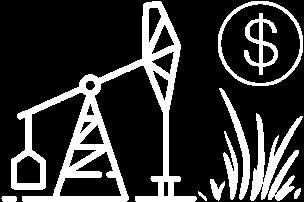


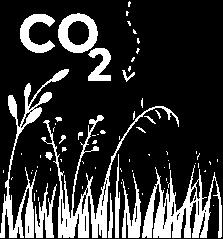
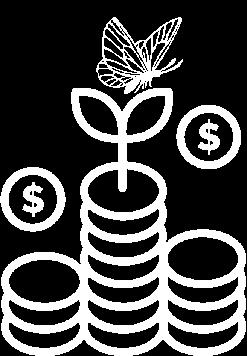
Native grassland restoration on oil and gas ROWs is economically beneficial
This study revealed that native grassland creates a greater aggregated value per acre ($1,196/acre) than non-native ($930/acre). The $266 increase in comparative annual values highlights the importance of evaluating all benefits to estimate the true Return on Conservation™ value. Ultimately, native grassland restoration provides more value for more stakeholders, including the landowner, even when considering the higher establishment and early maintenance costs.
Native grassland restoration creates greater biodiversity
Seeding with native vegetation had a positive impact on native plant cover and diversity. Despite high variability within biodiversity metrics, the native grassland had the highest average density with consistent performance throughout the year. Wildlife species richness was similar at native and non-native sites. However, the native sites contained 116% more species abundance compared to non-native sites, which is a good indicator of ecological health.
Native vegetation increases water recharge and reduces runoff
Reducing water runoff increases the amount of water infiltrating soil, ultimately resulting in greater water recharge. Soil model analysis indicated 63% less surface runoff at the native restored sites, consequently, less sediment lost in runoff. Native restored sites also had 56% faster soil infiltration rates which further support the positive impact of native grasses on volumetric water benefits. These benefits are crucial, as increased water retention impacts carbon sequestration rates.
Native grassland restoration shows increased potential for carbon sequestration
Native grassland restoration improves carbon sequestration potential through increased biomass, increased water retention, and soil microbial activity. Ultimately, this study modeled a 50% greater carbon sequestration rate, from 0.02 to 0.03 MT/acre/year between the non-native and native restored sites..
Evaluating full scope of benefits supports the case for native restoration
Based on the data evaluated in this project, the payback period for restoring native versus non-native at a $40 per acre cost difference is less than 2 months. Additionally, uplift for 0.02 MT/acre/year (0.06 MT/ha/year) of carbon sequestered and greater wildlife abundance of 116% was reported with native restoration. Native sites also demonstrated the capacity to absorb nearly 70,000 gallons/acre more water (roughly equivalent to 10 backyard pools) than the non-native sites. This likely increases aquifer recharge and contributes to significant reductions in runoff.
Evaluating and stacking all ecosystem and social benefits provides a value for native restoration work versus standard, non-native practice. Results from this study provide industry with a demonstration and dataset for measurable sustainability claims, as well as making a strong case for native grassland restoration. This project can be used to quantify and report the benefits of future projects including carbon, water, biodiversity, and social values. These outcomes are intended to encourage industry partners to consider conservation in conjunction with energy development.













